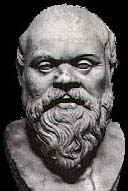Questions to Consider About
Austen’s Pride and Prejudice
1. What are the characteristics of a novel, and
what sort of expectations do they give rise to?
2. What kind of world or setting does this particular
novel portray?
3. Who are the main characters who people the novel
and what are they like?
4. What particular issues or problems provide a
basis for the story?
5. How does the title Pride and Prejudice
relate to the story?
6. How does the social milieu depicted compare with
that of contemporary America?
7. How does class serve as an important way of characterizing
and identifying people?
8. Into what different class categories do the main
characters fall?
9. What is the meaning of words like “gentleman,”
“gentle folk,” or gentility?
10. What are the dominant customs and its values of the
classes depicted?
11. How does the role of manners here compare with
that in contemporary society?
12. Is there more than one view of "good manners"? How
do they compare?
13. What do you make of the contrast between “country”
ways and those of London?
14. What devices are used to convey judgments about who
behaves correctly?
15. Whose viewpoint does the reader usually assume? Elizabeth's?
Why?
16. As the novel proceeeds, do Elizabeth or other characters
change?
17. Does the reader's viewpoint shift as that of Elizabeth
or other characters develop?
18. Are characters our only source of judgment, or is
there also an objective narrative voice?
19. How many ideas of love emerge, and what
accounts for the differences?
20. What different attitudes toward marriage do we find
here?
21. Are there “models” of ideal marriages
to seek or terrible marriages to avoid?
22. How are the feelings of “pride” and “prejudice”
related to marital success or failure?
23. To what extent are women or men shown in a generic
“war of the sexes?’
24. What values are placed on emotion or feeling here
in contrast to reason or “sense"?
25. What is the novel's tone? Might misunderstanding it
affect our interpretation of the book?
26. What kind of “plot,” if any, underlies the novel and
provides a narrative structure?
27. Is there a clear turning point or climax in the story?
28. What relationship do the three parts of the novel
have to one another?
29. How does the novel compare to the impression Woolf
gave of Austin's writing?
30. Do you think Pride and Prejudice is a "feminine"
as opposed to a "masculine" novel?
 Freshman Studies
Freshman Studies
Freshman Studies